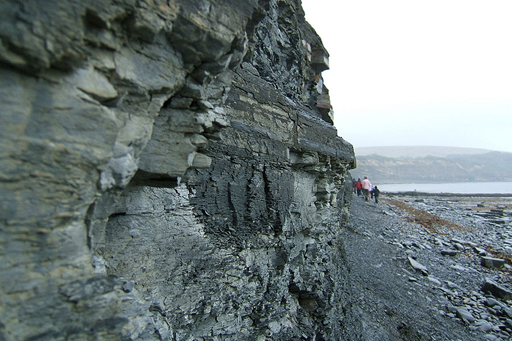3.6 Why doesn’t it just rot?
Most organic matter just rots. So what’s special about the organic matter that went on to become oil?
Most organic matter breakdown happens because scavengers and bacteria use oxygen to transform the organic matter back into carbon dioxide and water, releasing the stored energy along the way. However, if you don’t have that oxygen, then things that eat dead remains can’t survive, and neither can most bacteria.
At the bottom of some oceans, seas and lakes the water doesn’t contain enough oxygen to support the life that would otherwise break down the organic matter. It’s therefore preserved.
When this happens you end up with dark, organic-rich sediments which go on to become dark, organic-rich rocks, like the shale in Figure 3.9.
Once you have all the necessary ingredients, the organic matter needs to be cooked just the right amount. This happens when the source rocks are buried. Temperatures naturally rise the deeper you go into the earth. Oil starts to form from organic matter at about 50 ˚C, with optimal conditions for oil formation being temperatures of around 60–150 ˚C.
The heat breaks down the complex organic compounds into the much simpler hydrocarbons that make up oil. However, just like with your favourite cake, you have to keep an eye on the temperature. Too much heat will break down the hydrocarbons even further, first into small molecules like ethane, methane and butane that make up natural gas (which is useful), but with too much heat the hydrocarbons will break down completely.

